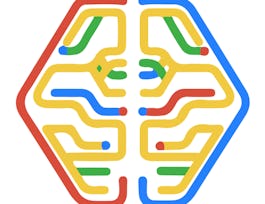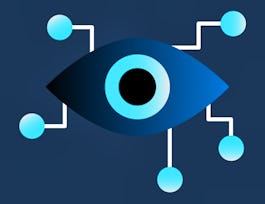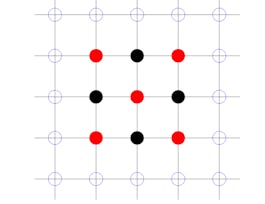By the end of this course, learners will understand what computer vision is, as well as its mission of making computers see and interpret the world as humans do, by learning core concepts of the field and receiving an introduction to human vision capabilities. They are equipped to identify some key application areas of computer vision and understand the digital imaging process. The course covers crucial elements that enable computer vision: digital signal processing, neuroscience and artificial intelligence. Topics include color, light and image formation; early, mid- and high-level vision; and mathematics essential for computer vision. Learners will be able to apply mathematical techniques to complete computer vision tasks.



Computer Vision Basics


Instructors: Radhakrishna Dasari
Sponsored by Abu Dhabi National Oil Company
81,487 already enrolled
(1,812 reviews)
Recommended experience
What you'll learn
Understand what computer vision is and its goals
Identify some of the key application areas of computer vision
Understand the digital imaging process
Apply mathematical techniques to complete computer vision tasks
Skills you'll gain
- Probability
- Color Theory
- Artificial Intelligence and Machine Learning (AI/ML)
- Calculus
- Mathematical Modeling
- Image Analysis
- Graphic and Visual Design
- Matlab
- Advanced Mathematics
- Mathematical Theory & Analysis
- Design Elements And Principles
- Computer Vision
- Statistics
- Artificial Intelligence
- Mathematics and Mathematical Modeling
- Computer Science
- Applied Mathematics
- General Mathematics
- Probability & Statistics
- Digital Design
Details to know

Add to your LinkedIn profile
9 assignments
See how employees at top companies are mastering in-demand skills


Earn a career certificate
Add this credential to your LinkedIn profile, resume, or CV
Share it on social media and in your performance review

There are 4 modules in this course
In this module, we will discuss what computer vision is, the fields related to it, the history and key milestones of it, and some of its applications.
What's included
13 videos2 readings3 assignments1 app item1 plugin
In this module, we will discuss color, light sources, pinhole and digital cameras, and image formation.
What's included
4 videos1 reading3 assignments2 app items
In this module, we will discuss the three-level paradigm of computer vision that was proposed by David Marr. We will also discuss low, mid, and high level vision.
What's included
5 videos1 reading2 assignments1 app item
In this lecture, we will discuss the Mathematics used in Computer Vision, which includes linear algebra, calculus, probability, and much more.
What's included
8 videos2 readings1 assignment1 app item
Instructors

Why people choose Coursera for their career




Learner reviews
1,812 reviews
- 5 stars
55.81%
- 4 stars
23.82%
- 3 stars
10.47%
- 2 stars
4.19%
- 1 star
5.68%
Showing 3 of 1812
Reviewed on Aug 1, 2021
I just loved the course. I can see the difference in the amount of knowledge I got from this course. The person before this course and after this course are two different persons!
Reviewed on May 8, 2019
I would like it to be more dense on content. It gives overview of many areas without diving into details. The labs feel somewhat disjointed from the rest of the course.
Reviewed on Aug 13, 2020
i really liked the course, but i wish that they would also help learn the programming in MATLAB a little, needs one extra week for the programming. Had to use external tools to learn the programming.
Recommended if you're interested in Computer Science

DeepLearning.AI

Google Cloud

Microsoft

The Hong Kong University of Science and Technology

Open new doors with Coursera Plus
Unlimited access to 10,000+ world-class courses, hands-on projects, and job-ready certificate programs - all included in your subscription
Advance your career with an online degree
Earn a degree from world-class universities - 100% online
Join over 3,400 global companies that choose Coursera for Business
Upskill your employees to excel in the digital economy




